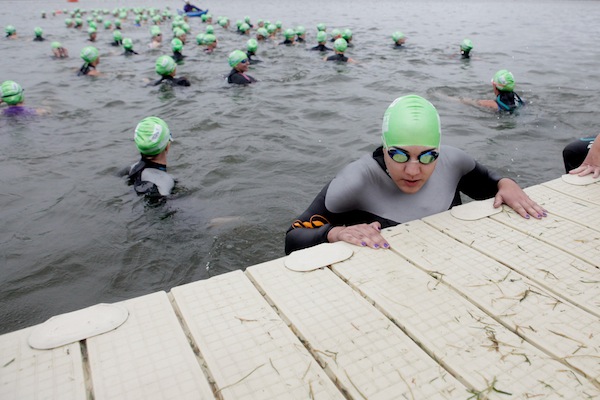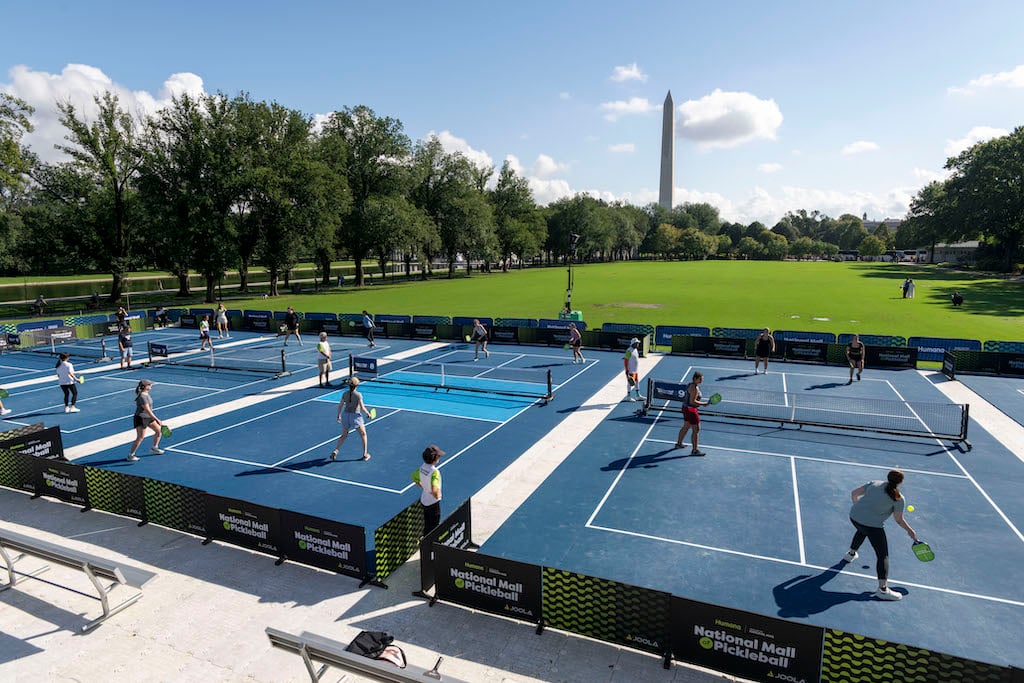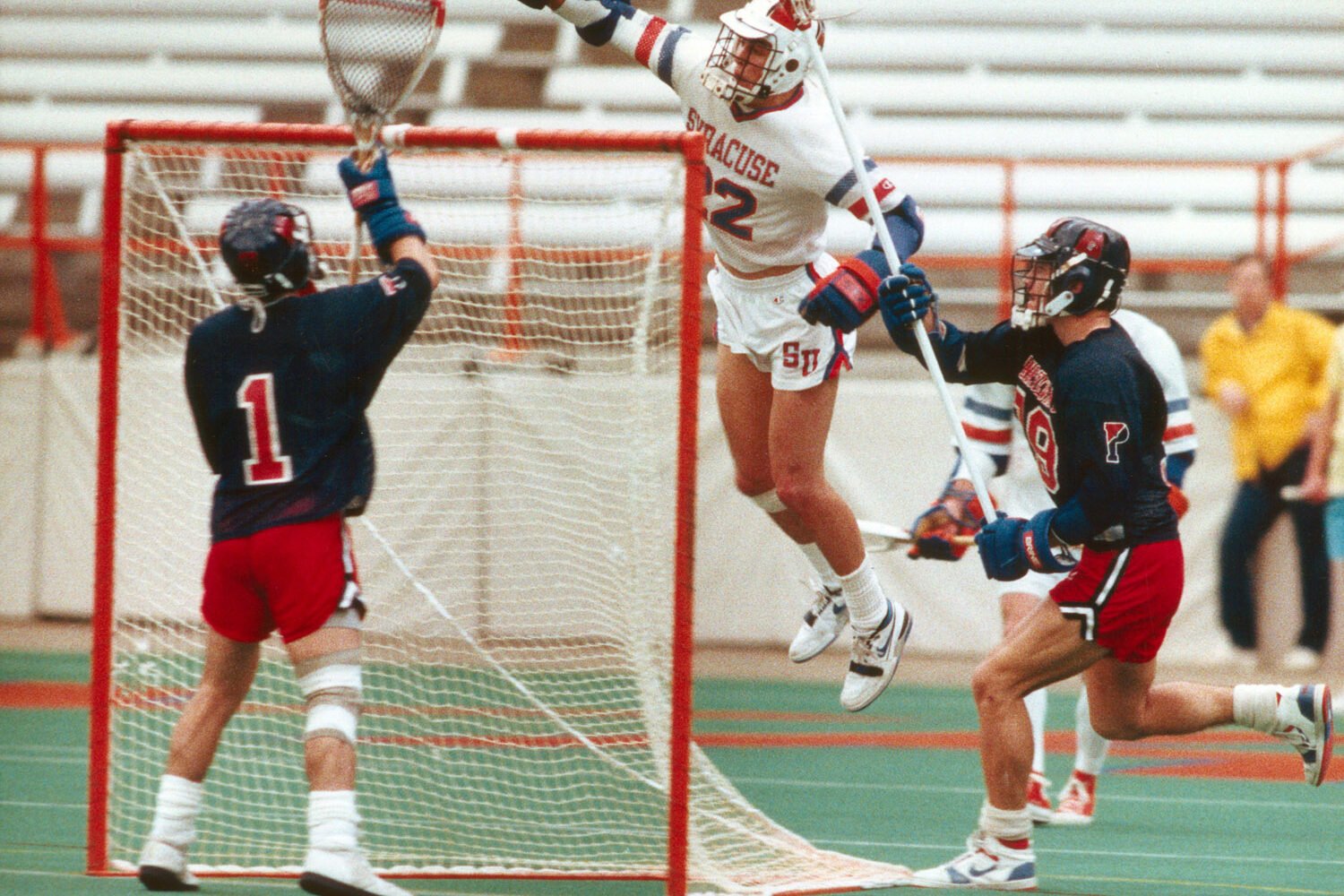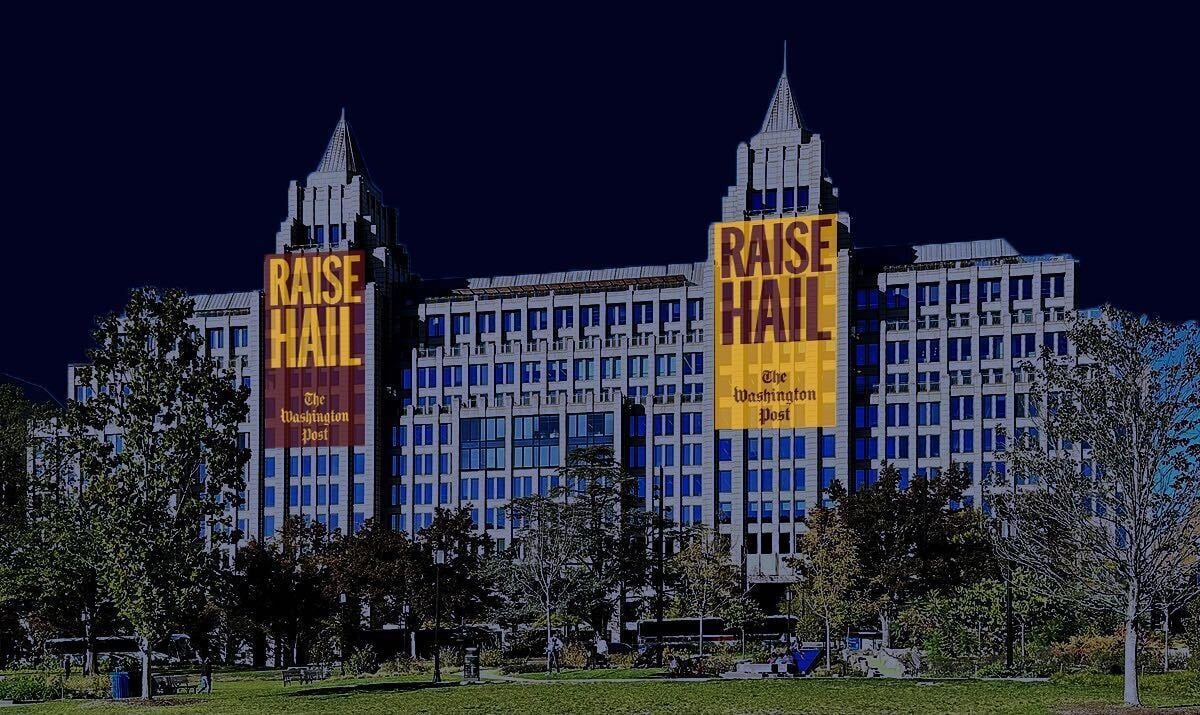If Steve Carlson had to describe his first triathlon in one word, it’d be “miserable.”
Here’s what the former rower remembers about that September 2001 race in Manassas: flying through the swimming and biking portions and then, during the 2K run, dry-heaving—repeatedly.
“My run became a jog . . . then a walk . . . then I stopped to dry-heave,” Carlson wrote in a recent blog post. “I dragged myself across the finish line, beaten by my roommate (he passed me while [I was] dry heaving).”
Since that first sprint triathlon—which Carlson completed without any preparation—he’s learned a lot about the sport, particularly how to pace himself. Ten years later, he’s the president of DC Tri Club, a group of local triathletes who train and socialize together.
Carlson is just one of the thousands of Washingtonians who fell into the sport by chance and have been sucked into the challenge. The Mid-Atlantic has seen a huge interest in triathlons over the last decade; it now has 22,857 annual USA Triathlon members—the highest concentration in the country.
The growth of triathletes in the area can be traced to a number of factors, says Molly Quinn, president of Washington Sports and Event Management, a company that organizes health and fitness events in DC. For one, the District is home to two annual triathlons: the Washington DC Triathlon, which will see competitors from more than 400 cities around the world at the June 19 race, and the Nation’s Triathlon, which will celebrate its sixth run on September 11 with likely more than 5,000 triathletes.
DC—dubbed TriTown USA by aficionados—has been named the fittest city in America by Forbes magazine for the past three years. Even the city’s former mayor Adrian Fenty was an avid triathlete.
But what is it about triathlons in particular that draws droves of Washingtonians? Surely it’s not the three-times-a-day training, constant injuries, and dry-heaving spells.
“Typically what you see in the sport is a lot of people who have really intense, type-A personalities,” says Alex Korab, a triathlete and owner of Transition Triathlon in Leesburg. “Here in DC, you see a lot of people who are really successful in their careers and are looking for a challenge even outside of work.”
Margie Shapiro says she’s “absolutely” one of those highly competitive Washingtonians. Eleven years ago, Shapiro entered a triathlon after graduating from Georgetown University; she ended up winning the “newbie” division. Now the 2005 International Triathlon Union World Champion is a professional triathlete who trains six days a week, owns and manages the eight-store chain Potomac River Running, and coaches other athletes—all while raising two kids.
“Type-A people have a better handle on how to structure and manage their lives,” Shapiro says. “There are lots of benefits to having that focus and competitive, go-getting personality.”
Still, it can be a lot to juggle. While most athletes focus on training for one sport, triathletes have to excel at three. Shapiro, a former cross-country and track runner, has worked with sports psychologists to help balance her life, but it hasn’t been easy. After realizing her body wasn’t recovering from numerous injuries and then getting diagnosed with epilepsy, Shapiro realized she needed to reevaluate how she was spending her time. Her running coach made her take Sundays off from training, and Shapiro promised not to run errands or make any appointments on her day of rest, either.
“I’m still trying to figure out an optimal balance,” she says.
Training clubs—groups of triathletes who run or bike together—are helpful. The club setting is the only way beginner triathlete Katie Ingram can fit in the running, biking, and swimming around her 9-to-5 job.
Like most triathletes, Ingram wakes up in the morning and get in a workout before work. If she can, she squeezes in another during lunch. But her afternoon rides with a local cycling group and her runs with the Capital Area Runners club keep her motivated.
“I’ve met a lot of friends through group training,” Ingram says. “You build up a sort of camaraderie.”
Shapiro, 34, and Ingram, 30, are just under the average age of triathletes in the United States, which is 38, according to USA Triathlon, the sport’s official governing organization. But increasingly, more twentysomethings are jumping on the bandwagon.
Emily Long, 24, signed up for her first triathlon last year simply because a marathon race had filled up already. “I got hooked,” she says.
Five triathlons later, Long says she’s noticed that her age group, 20-to-24-year-olds, has the smallest number of participants at races. She thinks it’s because the sport is so expensive.
Alex Korab, the Leesburg shop owner, says specialized triathlon bikes alone can cost up to $7,000, and accessories such as bike shorts, a helmet, running and biking shoes, and a wet suit can come in at about $1,000. And that’s not counting the registration fees for races, which can reach $600 for an Ironman race, the Holy Grail of all triathlon distances: a 2.4-mile swim, a 112-mile bike ride, and a 26.2-mile run.
A 2009 USA Triathlon survey found that the average income for a triathlete was $126,000. The average income for an Ironman competitor is even higher, at $161,000.
When Long, a journalist, saw that figure, she said it was “insane” and jokingly wrote on her blog that she needed a raise. “There’s a lot of prioritizing and saving money,” she says. “But since it’s something I really enjoy, I feel like it’s worth it.”
Of course, there’s also the addiction factor: “It might be painful when you’re doing it,” says Long. “But then you cross the finish line and say, ‘When’s my next race?’ ”
Subscribe to Washingtonian
Follow Well+Being on Twitter
More >> Health | Top Doctors | Well+Being Blog



















